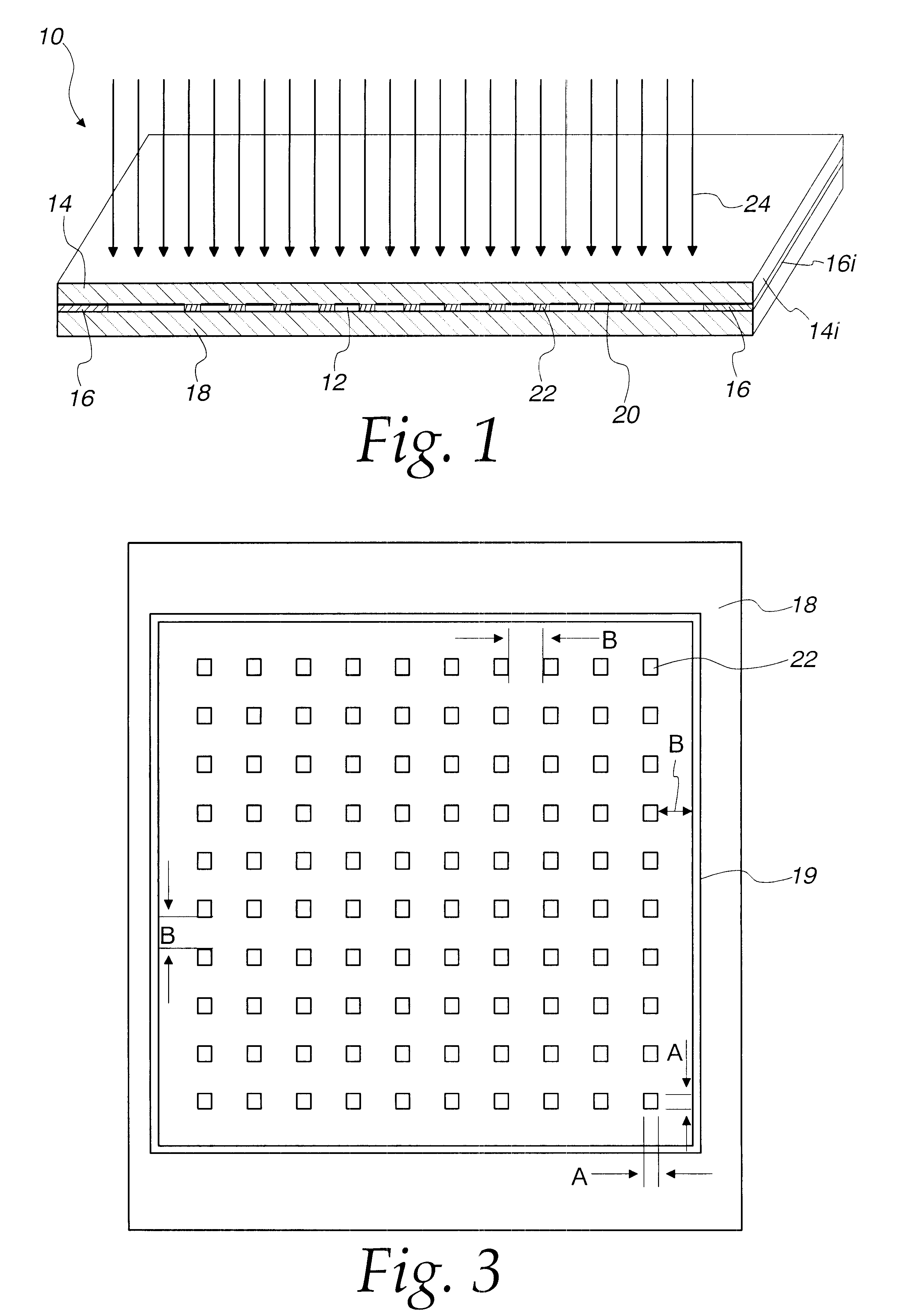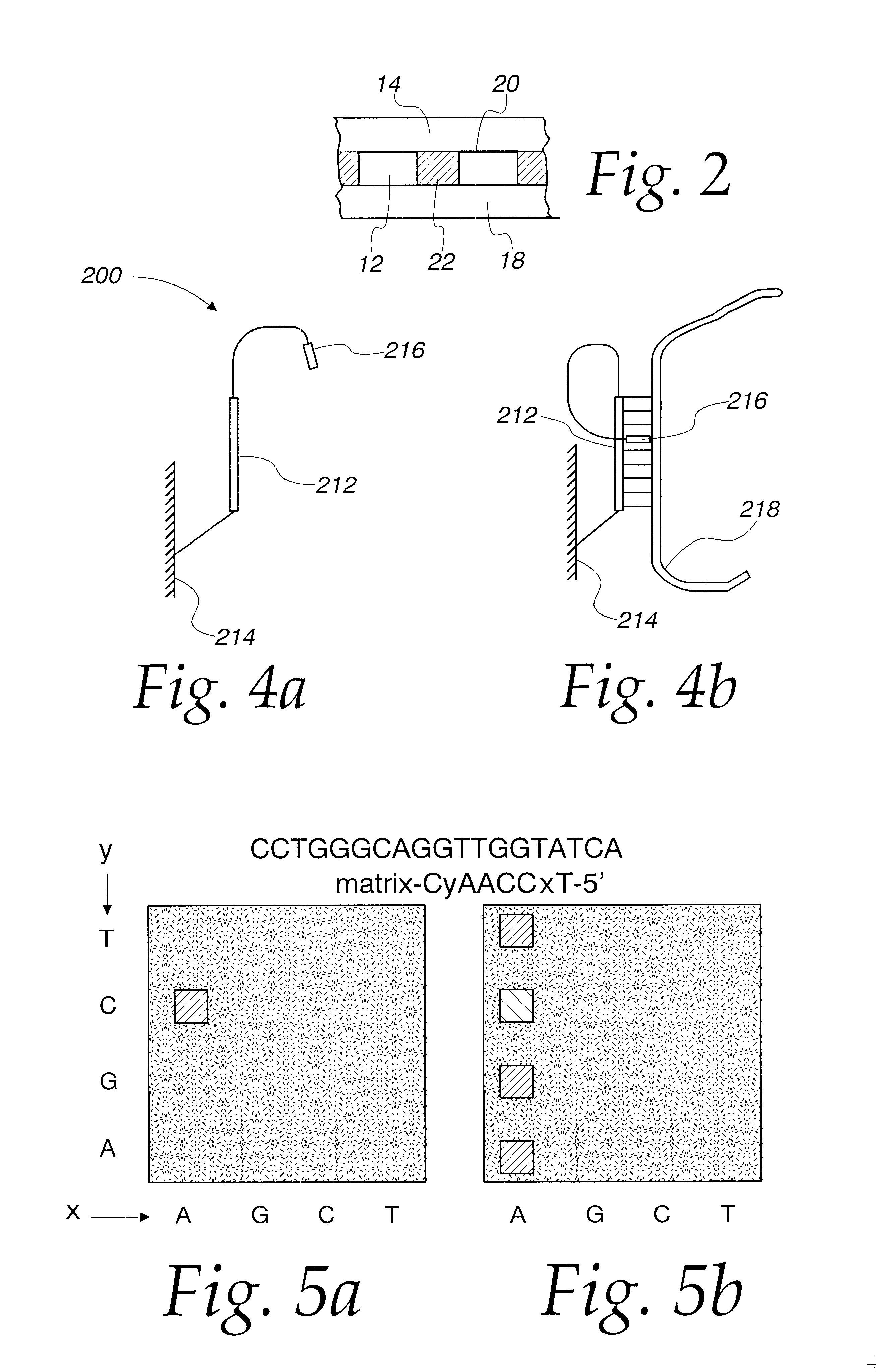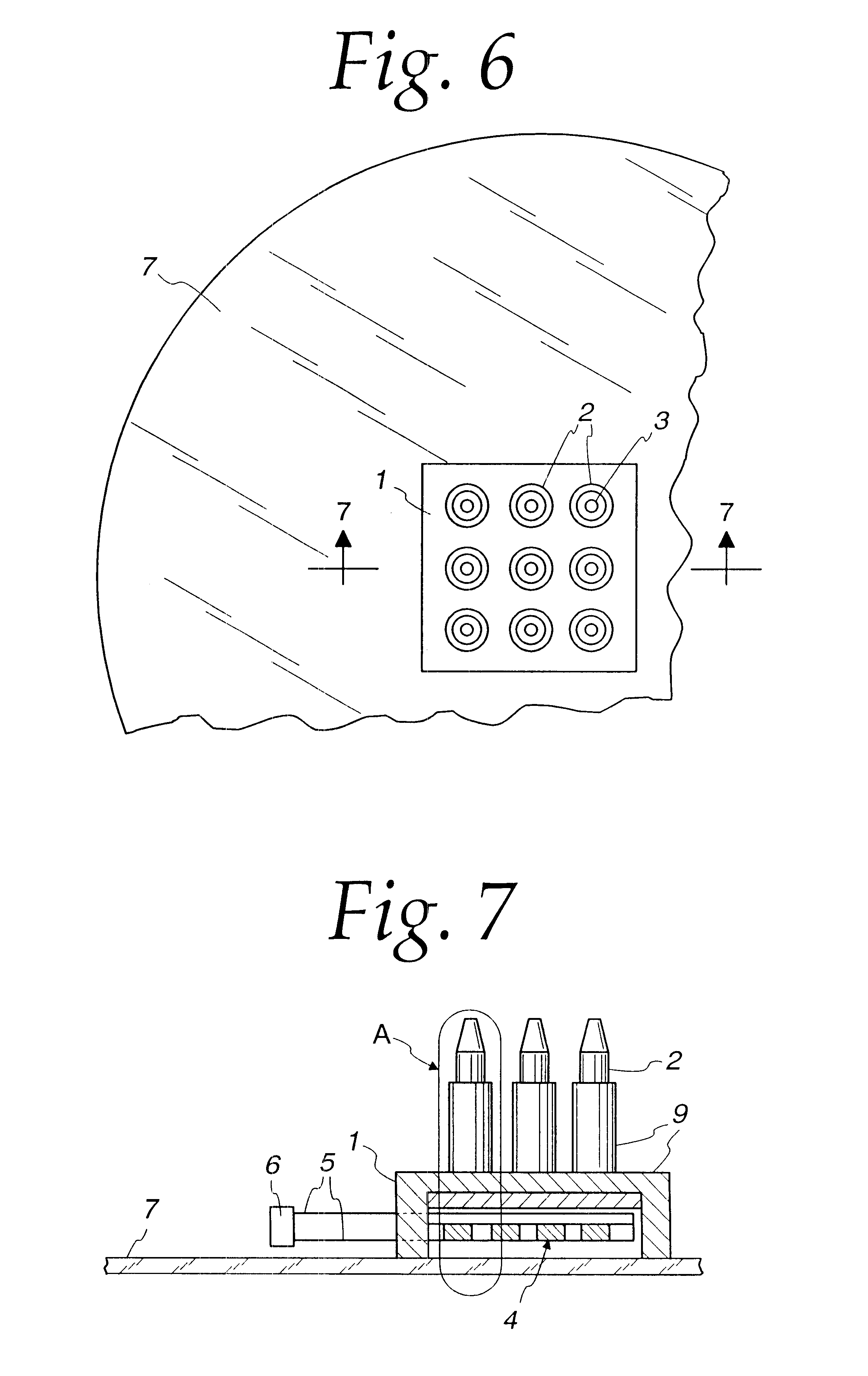Rapid method to detect duplex formation in sequencing by hybridization methods, a method for constructing containment structures for reagent interaction
a technology of reagent interaction and detection method, which is applied in the field of rapid detection of duplex formation in sequencing by hybridization method, can solve the problems of inability to sequence long genome strings via shom, inefficient and somewhat time-consuming, complex present techniques for determining the existence of target sequences in patient dna, etc., and achieves enhanced detection ability, rapid detection of duplexes, and high efficiency
- Summary
- Abstract
- Description
- Claims
- Application Information
AI Technical Summary
Benefits of technology
Problems solved by technology
Method used
Image
Examples
Embodiment Construction
FIG. 5 illustrates the efficiency of using either fluorescently labeled target ss DNA strings (I) or intercalating dyes (II) to rapidly detect duplex formation. This plan view depicts the same matrix of polyacrylamide cells, whereby the matrix is manufactured by the methods disclosed supra. The matrix is comprised of 16 cells, each cell loaded with the octamer CyAACCxT-5'. As shown, the 3' end is anchored to the gel and not available for further interaction. The immobilized octamer varies at two base positions "y" and "x" as shown along the boundaries of the matrix.
As can be determined in FIG. 5 (I), when the octamer-loaded matrix is hybridized with fluorescently labeled ss DNA, such as the 19-mer CCTGGGCAGGTTGGTATCA, a clear signal is seen when a perfect GC and TA match is made at duplexing. The fluorescent label used in this instance was HEX, available through Applied Biosystems, Foster City, Calif. Another suitable dye is tetramethylrodamine.
In a separate experiment, when the oct...
PUM
| Property | Measurement | Unit |
|---|---|---|
| wavelength | aaaaa | aaaaa |
| wavelength | aaaaa | aaaaa |
| wavelength | aaaaa | aaaaa |
Abstract
Description
Claims
Application Information
 Login to View More
Login to View More - R&D
- Intellectual Property
- Life Sciences
- Materials
- Tech Scout
- Unparalleled Data Quality
- Higher Quality Content
- 60% Fewer Hallucinations
Browse by: Latest US Patents, China's latest patents, Technical Efficacy Thesaurus, Application Domain, Technology Topic, Popular Technical Reports.
© 2025 PatSnap. All rights reserved.Legal|Privacy policy|Modern Slavery Act Transparency Statement|Sitemap|About US| Contact US: help@patsnap.com



